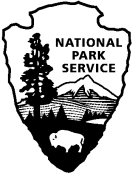Respondent
Universe:
The
respondent universe for this collection will be all adults (18
years and older) visiting Grand Teton National Park’s Moose
Wilson from June 15 to June 30, 2015.
Sampling
Plan/Procedures:
The
visitor survey sampling will take place near the Granite entrance
to Moose-Wilson Road, and the Death Canyon trailhead from June 15
to June 30, 2015. Sampling days will be evenly stratified by day
of the week, time, and location, proportionate to visitation
estimates provided by the park. On each sampling day, two trained
research assistant will be stationed at one of the locations
between 7 a.m. and 7 p.m. Research assistants will recruit study
participants by contacting a random sample of visitors as they are
entering the study area.
The
Granite entrance intercept location was chosen because it provides
adequate space for pulling over vehicles and collecting data
safely. At this sampling location, one surveyor will serve as a
flagger to control traffic, and one will serve as a data
collector. At this site, visitor groups will be intercepted
approximately every 10 minutes (this sampling interval may be
adjusted if traffic volume fluctuates). Groups will be greeted by
the surveyor after they safely pull off the road segment, and
introduced to the purpose of the study. On opposing days (days
when sampling is not taking place at the Granite entrance),
surveyors stationed at the Death Canyon trailhead will intercept
hiking visitors as they enter and exit the trail system. At this
site, visitor groups will be intercepted approximately every 10
minutes.
Visitors
who agree to participate will complete a survey. This process will
continue throughout the sampling period. Individuals or groups who
are unwilling or unable to participate in the study will be
thanked for their consideration. All interactions (i.e., time,
location, mode of transportation, etc.) will be documented with a
study log.
Instrument
Administration:
Surveys
will be administered by trained research assistants working under
the supervision of the PI and GRTE staff. The survey questionnaire
will be administered by handing the participant a laminated copy
of the survey. The research assistants will use tablet computers
to capture the verbal responses from participants. This method is
used to facilitate skip patterns and eliminate data entry errors.
All participating respondents will be read the instructions and
administered the survey. This process will continue throughout the
sampling period.
There
will be 2 different versions of this survey. While the majority
of questions will remain the same for each survey (e.g. visit
characteristics, visitor demographics), each of the 2 versions of
the survey will contain a unique series of questions. In the
series of unique questions, respondents will be presented with 9
pairs of alternative management scenarios for the Moose-Wilson
corridor and will be asked to choose the management scenario they
prefer and the level of perceived safety of that scenario.
Photographs will also be used to represent different levels of
vehicle traffic on a section of road.
The
research assistant will use the following script when working with
potential respondents:
Hello,
I am conducting a study for Grand Teton National Park to better
understand the types of experiences visitors seek while recreating
within the Moose-Wilson Corridor of the park. Your participation
is voluntary and your responses will be anonymous. In total, this
study will take you about 10 minutes to complete. Would you be
willing to participate?”
If
NO:
“Do
you mind if I ask, what is the primary activity you are planning
to do during your visit? --- Thank you for your time and
consideration. I hope you enjoy your visit.”
If
YES:
“Thank you for your willingness to assist with this study.
Who in your group (who is at least 18 years old) has the next
birthday? Would you be willing to participate in the study?
The
surveyor will provide the instructions for completing the survey
and will be in the process.
(d)
Expected Response Rate/Confidence Levels:
A
total of 190 visitors (95 in vehicles and 95 hikers) will be
contacted during the sampling period. It is estimated that 80%
(n=150) will be willing to participate in the surveys. These
estimates are based on previous research in the Moose-Wilson
Corridor. Vaske (2008) concluded that the estimated sample size,
given this unique and under-studied user-group, typically allows
generalization to a population with a 95% confidence interval that
the survey findings will be accurate to within ±5
percentage points.
|





